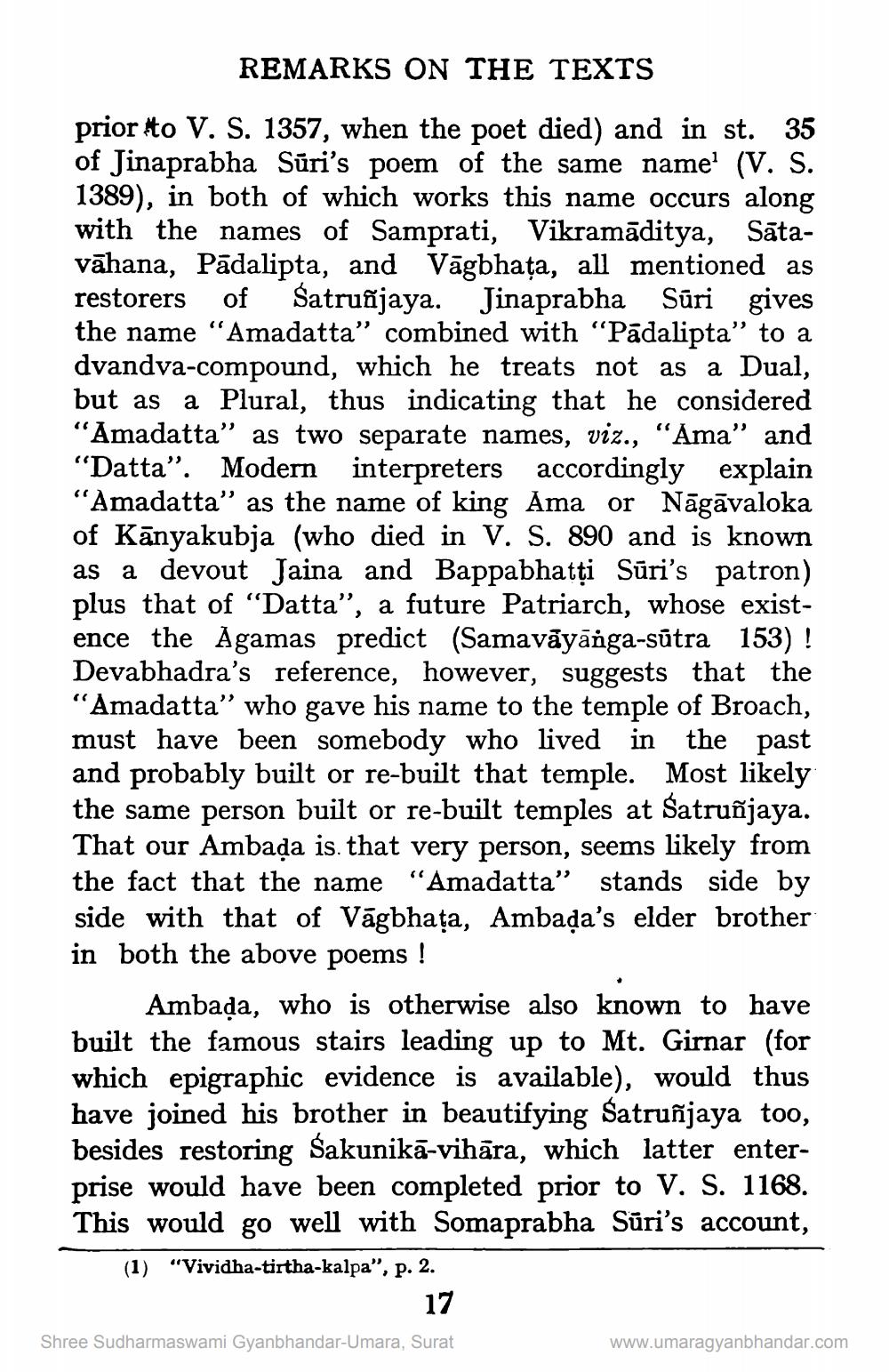________________
REMARKS ON THE TEXTS
prior to V. S. 1357, when the poet died) and in st. 35 of Jinaprabha Sūri's poem of the same name' (V. S. 1389), in both of which works this name occurs along with the names of Samprati, Vikramāditya, Sātavāhana, Padalipta, and Vāgbhata, all mentioned as restorers of Satruñjaya. Jinaprabha Sūri gives the name “Amadatta” combined with "Pādalipta” to a dvandva-compound, which he treats not as a Dual, but as a Plural, thus indicating that he considered “Amadatta” as two separate names, viz., "Ama" and "Datta". Modern interpreters accordingly explain "Amadatta” as the name of king Ama or Nāgāvaloka of Kānyakubja (who died in V. S. 890 and is known as a devout Jaina and Bappabhatti Sūri's patron) plus that of “Datta", a future Patriarch, whose existence the Agamas predict (Samavāyānga-sūtra 153) ! Devabhadra's reference, however, suggests that the "Amadatta” who gave his name to the temple of Broach, must have been somebody who lived in the past and probably built or re-built that temple. Most likely the same person built or re-built temples at Śatruñjaya. That our Ambada is, that very person, seems likely from the fact that the name "Amadatta" stands side by side with that of Vāgbhata, Ambada's elder brother in both the above poems !
Ambada, who is otherwise also known to have built the famous stairs leading up to Mt. Girnar (for which epigraphic evidence is available), would thus have joined his brother in beautifying Satruñjaya too, besides restoring Śakunikā-vihāra, which latter enterprise would have been completed prior to V. S. 1168. This would go well with Somaprabha Sūri's account, (1) "Vividha-tirtha-kalpa", p. 2.
17
Shree Sudharmaswami Gyanbhandar-Umara, Surat
www.umaragyanbhandar.com




